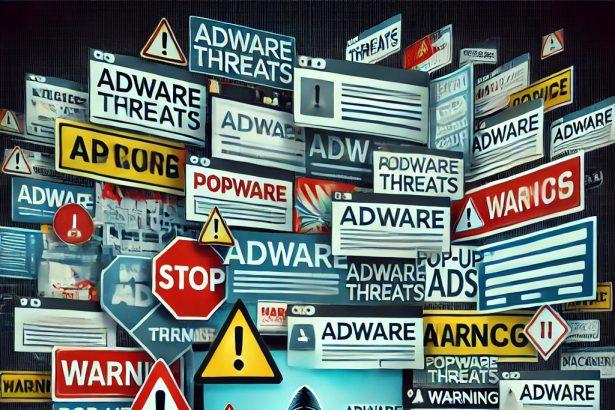Bachlobeekeled.com is a deceptive website designed to trick users into enabling intrusive browser notifications. Once permission is granted, it bombards users with unwanted ads that can lead to scams, malware infections, and serious privacy breaches. This threat is typically encountered through redirects from dubious websites or bundled with potentially unwanted applications (PUAs).
Threat Overview
Bachlobeekeled.com operates as a browser notification spam source, delivering pop-up ads and redirecting users to potentially harmful sites. It often uses fake CAPTCHA prompts to deceive users into allowing notifications, which then serve as a conduit for various cyber threats.
Threat Summary
| Attribute | Details |
|---|---|
| Threat Type | Push Notifications Ads, Unwanted Ads, Pop-up Ads |
| Associated Domain | bachlobeekeled.com |
| Detection Names | Various generic adware or phishing detection tags |
| Symptoms of Infection | Unexpected advertisements, intrusive pop-ups, decreased internet browsing speed |
| Damage & Distribution | Slower system performance, browser tracking, potential for additional malware; spreads via fake prompts, suspicious redirects, and bundled adware |
| Danger Level | Medium |
| Removal Tool | SpyHunter |
In-Depth Analysis
How Did I Get Infected?
Users typically encounter bachlobeekeled.com through redirects after visiting shady websites or downloading free software bundles that include adware. The site tricks users by displaying a fake CAPTCHA or similar prompt that encourages them to click “Allow” to continue. This grants permission for the site to send browser notifications.
What Does It Do?
Once notification permission is granted, the site pushes a continuous stream of advertisements, often promoting:
- Fake software updates or system alerts
- Phishing websites
- Malicious downloads
- Scam services or adult content
These notifications appear even when the browser is closed, creating persistent annoyance and potential risk of exposure to real cyber threats.
Should You Be Worried?
Yes, bachlobeekeled.com poses both security and privacy risks. Beyond the nuisance of non-stop ads, the content promoted through its notifications can lead to more serious malware infections or phishing attempts. Allowing such sites access to push notifications essentially opens a direct communication channel between cybercriminals and your desktop or mobile device.
Manual Adware Removal Process (Windows & Mac)
Step 1: Identify and Uninstall Suspicious Applications
For Windows Users
- Open Task Manager by pressing
Ctrl + Shift + Esc. - Navigate to the “Processes” tab and search for unknown or high-resource-consuming processes.
- If you detect anything suspicious, right-click and select “End Task.”
- Go to
Control Panel>Programs>Programs and Features. - Locate and uninstall any unfamiliar programs.
For Mac Users
- Open
Finderand click onApplications. - Identify and move any suspicious applications to the
Trash. - Empty the
Trash. - Check
System Preferences>Users & Groups>Login Itemsfor unknown startup programs and remove them.
Step 2: Remove Malicious Browser Extensions
Google Chrome
- Open Chrome, click
Menu(three dots) >Extensions. - Locate and remove unknown extensions.
- Reset Chrome:
Settings>Reset settings> “Restore settings to their original defaults.”
Mozilla Firefox
- Click
Menu>Add-ons and themes. - Remove suspicious extensions.
- Reset Firefox:
Help>More troubleshooting information> “Refresh Firefox.”
Safari (Mac)
- Open Safari, go to
Preferences>Extensions. - Delete unknown extensions.
- Reset Safari:
History> “Clear History.”
Microsoft Edge
- Click
Menu>Extensions. - Remove any unfamiliar extensions.
- Reset Edge:
Settings>Reset settings> “Restore settings to their default values.”
Step 3: Delete Adware-Associated Files and Folders
For Windows Users
- Press
Win + R, type%AppData%, and press Enter. - Locate and delete suspicious folders.
- Repeat for
%LocalAppData%,%ProgramData%, and%Temp%.
For Mac Users
- Open Finder and press
Shift + Command + G, then enter~/Library/Application Support/. - Remove any suspicious folders.
- Repeat for
~/Library/LaunchAgents/,~/Library/LaunchDaemons/, and~/Library/Preferences/.
Step 4: Flush DNS Cache to Remove Adware Traces
For Windows Users
- Open
Command Promptas Administrator. - Type
ipconfig /flushdnsand press Enter.
For Mac Users
- Open
Terminal. - Enter
sudo killall -HUP mDNSResponderand press Enter.
Step 5: Restart Your System
Perform a reboot to apply the changes and ensure the removal process is complete.
Automatic Adware Removal Using SpyHunter (Windows & Mac)
For an effortless and effective solution, use SpyHunter, a powerful anti-malware tool designed to detect and remove adware completely.
Step 1: Download SpyHunter
Click the link to download SpyHunter: Download SpyHunter Here.
Step 2: Install SpyHunter
Follow the installation guide based on your operating system:
For Windows Users
- Run the downloaded
.exefile. - Follow the installation instructions.
- Launch SpyHunter and allow it to update its malware database.
For Mac Users
- Open the downloaded
.dmgfile. - Drag and drop SpyHunter into
Applications. - Open SpyHunter and let it update its database.
Step 3: Scan and Remove Adware
- Open SpyHunter.
- Click
Start Scan. - Wait for the scan to complete.
- Click
Fix Threatsto remove detected malware.
Step 4: Restart Your Computer
After SpyHunter removes all threats, restart your system to ensure all adware components are fully removed.
Conclusion
Bachlobeekeled.com is a push notification-based threat that exploits browser permissions to deliver constant and potentially dangerous ads. If you’re seeing unexpected pop-ups or experiencing decreased browser performance, it’s critical to take action immediately. Using a trusted anti-malware tool like SpyHunter can help detect and eliminate adware or other associated threats effectively.




